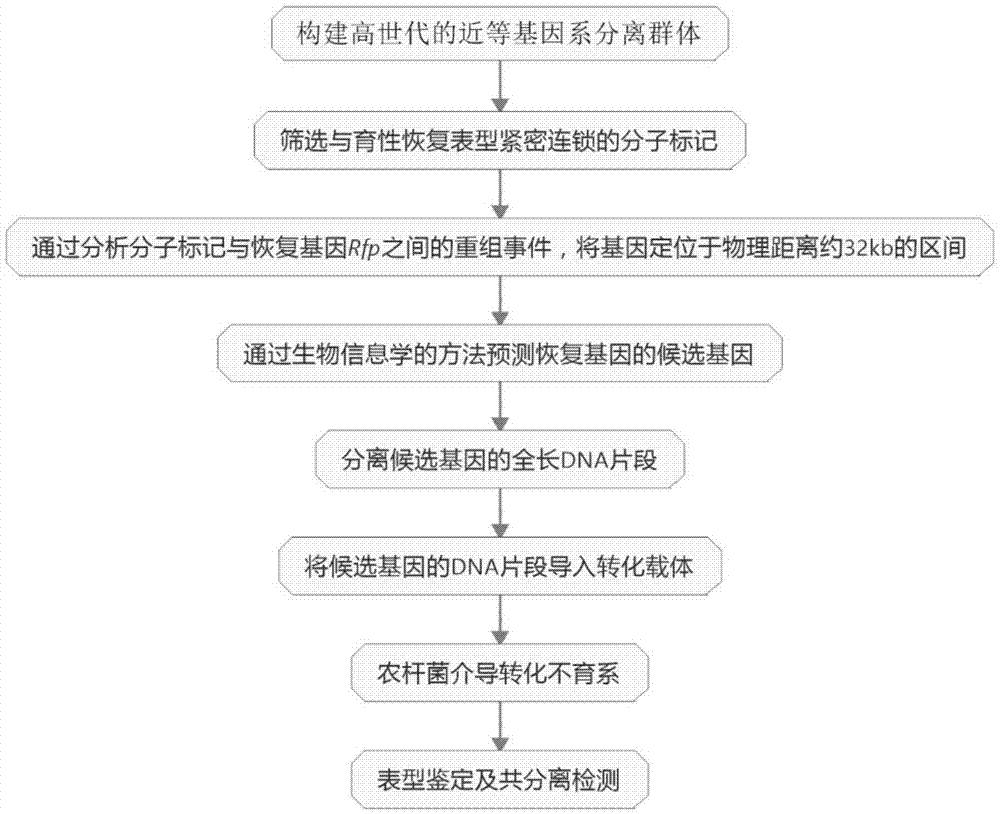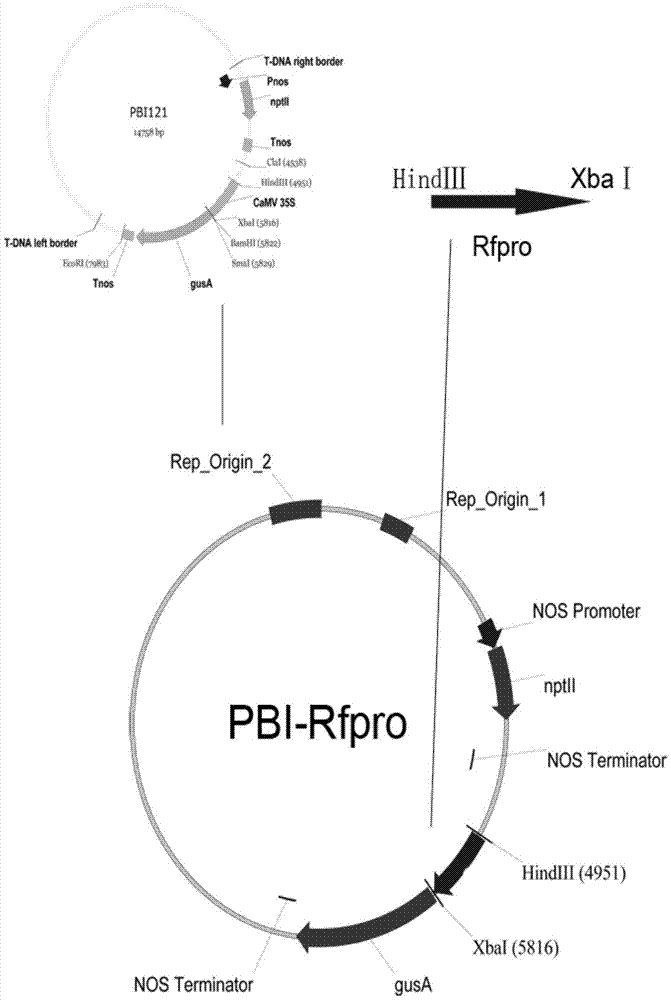Brassica napus Polima cytoplasmic male sterility restoring gene Rfp and application thereof
A technology of male sterility in Brassica napus, applied in application, genetic engineering, plant genetic improvement, etc., can solve problems such as large labor costs and long breeding cycle
- Summary
- Abstract
- Description
- Claims
- Application Information
AI Technical Summary
Problems solved by technology
Method used
Image
Examples
Embodiment 1
[0024] Example 1: Construction of a physical map containing the Rfp segment of the cytoplasmic male sterility restorer gene in Brassica napus and fine mapping of the sterility restorer gene Rfp
[0025] 1. Experimental materials
[0026] The raw material used in this example is rapeseed polima cytoplasmic male sterile line 6330A (Zeng, F.Q., et al., Identification of AFLP and SCAR markers linked to the male fertility restorer gene of pol CMS (Brassica napus L.). Euphytica, 2009.165(2): p.363-369) and another rapeseed polima cytoplasmic male sterility restorer line Bing409 (document above: Zeng, F.Q., et al., 2009), the restorer line Bing409 was selected as the donor parent , and using 6330A as the recurrent parent, a near-isogenic line was obtained by multi-generation backcrossing and sibling crossing (Zeng, F.Q., et al., 2009).
[0027] The near-isogenic line constructed after the sister crossing of sterile and fertile strains (see the literature for the construction method ...
Embodiment 2
[0055] Example 2: Isolation and functional verification of the dominant gene Rfp
[0056] 1. Determination of Rfp candidate genes
[0057] The model organism used in this example is Blast from the report of the Arabidopsis website. 10 (http: / / www.arabidopsis.org / blast) software analyzes the sequence of Brassica napus containing Rfp between the molecular markers SSR48 and SSR53, showing that there may be 10 genes in this segment, one of which is PPR (pentatricopeptide repeat, accession number IPR002885) family members. The transcription initiation site of this gene was determined by analyzing the reference genome sequence, and high-fidelity PCR polymerase (Phusion TM High-Fidelity DNA Polymerse (purchased from New England Biolads Company) was used to isolate a fragment of about 1.5 kb in the upstream untranslated region of the gene (that is, including the promoter region of the gene), and the amplified fragment was cloned into pMD18-T (purchased from Bao Bioengineering Dalia...
Embodiment 3
[0068] Example 3: Cytological slice analysis
[0069] In order to further determine the cytological characteristics of Porima cytoplasmic male sterility and abortion, and clarify the function of the Rfp gene, the present invention carried out semi-thin section observations on the anthers, focusing on observing the microspores and Tapetum development, the differences in the development of tapetum and microspores in fertile and sterile anthers at different stages were compared. The result of semi-thin section showed that the stage of abortion occurred in the stage of differentiation of protosporium ( Figure 7 Figure C in and Figure 7 Figure I in the sterile single plant anther, the inner wall, middle layer, tapetum and microspore mother cells that the L2 layer cells in the sterile single anther cannot normally differentiate; the sterile single plant anther develops to the pollen mother cell period ( Figure 7 Figure D in and Figure 7 Figure J in ) has been unable to form f...
PUM
 Login to View More
Login to View More Abstract
Description
Claims
Application Information
 Login to View More
Login to View More - R&D
- Intellectual Property
- Life Sciences
- Materials
- Tech Scout
- Unparalleled Data Quality
- Higher Quality Content
- 60% Fewer Hallucinations
Browse by: Latest US Patents, China's latest patents, Technical Efficacy Thesaurus, Application Domain, Technology Topic, Popular Technical Reports.
© 2025 PatSnap. All rights reserved.Legal|Privacy policy|Modern Slavery Act Transparency Statement|Sitemap|About US| Contact US: help@patsnap.com



